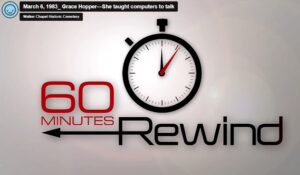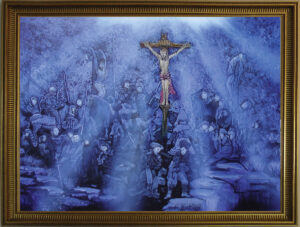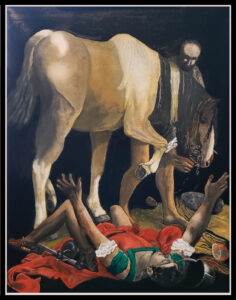It was a cold day and my Chief and I had driven up from the Naval Submarine Base at New London to attend a special presentation on computers at the Naval War College in Newport, Rhode Island. As we were looking for a parking place my Chief sang out, “Look at that Granny-Anny!” It was a thin, stooped, Navy Wave in a huge overcoat shuffling down the sidewalk carrying a canvas bag and looking down where she was walking. The moment passed as we found parking and entered the huge presentation hall and found seats near the front.
After opening festivities the main speaker was announced; Commander Grace M. Hopper, United States Navy. Out came our Granny-Anny in full uniform standing straight and tall! I’m sure everyone heard my Chief’s chin hit the floor. She studied math and physics at Vassar and received her master’s and Ph.D. in mathematics from Yale. She programmed the first Mark series of computers and led the development of COBOL using the UNIVAC computer.
CDR Hopper told us of her days with the first computers and the origin of the computer “bug”. She told us how she and her crew would look for office renovations in the Pentagon and then after hours go and steal desks, chairs, and equipment because they didn’t have the budget for such things. She said, “It’s easier to beg forgiveness than to get permission.” She would have fit right in with my crew! At the end of her presentation, she pulled from her canvas bag two spools of wire. The huge spool represented how long it took a signal to pass from one end to the other in a microsecond. The smaller spool did the same for a millisecond. We were still working with punched cards so all of this was science fiction to us. It was truly a day to remember.
Years later the tables were reversed and I was briefing CDR Hopper. I was in charge of the development of the next generation of application software for the Bureau of Naval Personnel including the development of a military manpower system that modeled emerging weapon systems with Navy personnel resources and would tell us what kind of sailor we would need to man these weapons over the next five years. We wanted to use a strange language called APL; CDR Hopper was the mother of COBOL and the two languages were not at all compatible so we needed her permission.
It was a too small conference room with lots of flag officers and my bosses present. CDR Hopper came in and sat toward the back and took out her knitting and proceeded to knit through my entire presentation! When the end thankfully came, the leading Admiral looked to CDR Hopper and asked, “what do you think Grace?”
She slowly put her knitting away and then with almost a tear in her eye she said how sad it was that so many good people had put all that effort into COBOL only to have us throw it away…”
A few months later I bumped into Grace at National Airport and we had a wonderful time as we waited for our flights. I told her of the reaction after the meeting and how everyone would remember the moment. She said, “It was fun wasn’t it.” What I never told her was I took her advice…that it’s easier to beg forgiveness than to get permission…and used APL.
Please take a moment to Google Grace M. Hopper and read about this exceptional lady and Naval Officer. You may not know her, but through her mathematics and computer science, she has touched each and every one of our lives.
Grace retired in 1986 at the age of 79 with the rank of Rear Admiral and was the oldest serving officer in the Navy. She passed away on January 1, 1992, at the age of 85. Among her many awards are National Medal of Technology and Innovation, Presidential Medal of Freedom, and the IEEE Emanuel R. Piore Award.
USS Hopper, DDG-70 celebrating on what would have been her 100th birthday

Grace loved computers
but loved the Navy even more
Video Collection: Click image to run









